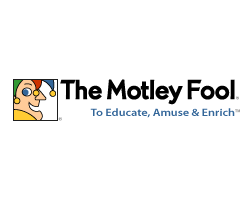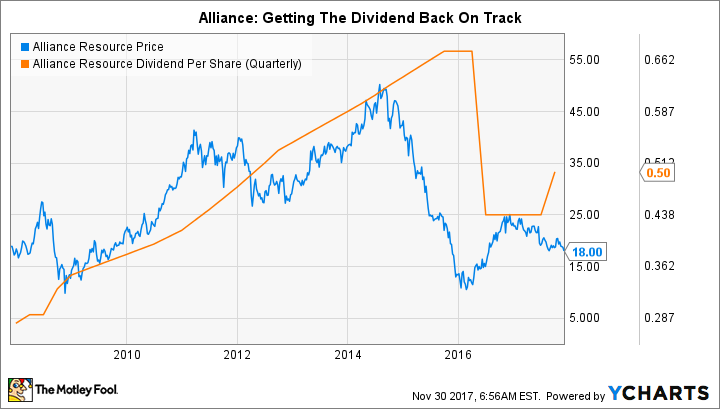Here's How Alliance Resource Partners, L.P. Crushed It in 2017

By Reuben Gregg Brewer
December 7, 2017 - Owning coal miner Alliance Resource Partners, L.P. (NASDAQ:ARLP) has not been easy this year. There's a combination of factors for that, including continued pressure on the U.S. thermal coal industry and a unit price that has fallen around 20%. But underneath that, Alliance has continued to show why it's one of the best coal miners in the business. In fact, in some ways, it's been crushing it for unitholders in 2017.
The Business
Alliance primarily sells thermal coal mined out of the Illinois Basin coal region. That basin, located in what the U.S. Energy Information Administration (EIA) calls the interior region, is expected to see its share of the coal market increase from 20% to 26% by 2040. Even in a worst-case scenario, production is expected to remain stable over that span while other regions see continued declines.
The EIA could be wrong, but the point is that coal isn't nearly as dead as the headlines would have you believe. And the region in which Alliance operates is relatively well situated. That gives a nice backdrop to the nearly 6% year-over-year sales volume increase Alliance saw through the first nine months of 2017. For the full year, the partnership's low-end estimate for fourth-quarter coal sales will lead to a full-year sales volume increase of around 4%. Since all of Alliance's coal is under contract through the end of the year, it should be pretty easy to hit that target.
On the cost side of the equation, Alliance was able to trim expenses by a little over 5% year over year through the first nine months of 2017. Those cost savings were achieved even though sales volumes were higher. Clearly, Alliance is doing a good job on the operations front.
All of the news isn't good, though. For example, Alliance's sales prices have been hit as longer-term contracts inked at higher prices have fallen off its books. The sales price per ton was off by over 12% year over year through the first nine months of 2017. That led to a 6.5% revenue slump, as sales volume gains offset some of the damage. But the elimination of general partner distributions in 2017 (more on this) and the aforementioned cost savings helped the partnership achieve an 11.5% increase in net income per unit. So, even in a tough market, Alliance is putting up good numbers for its unitholders.
The Big Changes
Now for the really notable updates. First and foremost, Alliance increased its distribution by roughly 14% in July. The partnership cut its distribution in April 2016, citing the need to ensure it could maintain its access to capital markets that were increasingly difficult for coal companies to tap. CEO Joseph Craft explained that Alliance was being painted with the same brush as the rest of the industry, despite the fact that it was outperforming its peers.

A distribution coverage ratio of nearly two times for all of 2016, and 2.9 times in the fourth quarter of that year, suggests he was explaining the situation accurately. Coverage at those levels is huge in the partnership space, where a ratio of 1.2 is considered good. However, the real proof of Alliance's strength was the July resumption of distribution increases. It increased the distribution by another 1% when third quarter earnings were announced. Alliance shifting back to distribution growth is a huge win for unitholders.
The other big change was the decision to eliminate general partner Alliance Holdings GP, L.P.'s (NASDAQ:AHGP) incentive distribution rights. That announcement came at the same time as the 14% distribution increase. It required issuing Alliance Holdings 51.1 million units, which is obviously dilutive to current unitholders. However, the long-term benefit is a reduced cost of capital and an increasing likelihood that Alliance Resource Partners will acquire or internalize its general partner.
If Alliance Resource Partners makes that move, it will not only simplify the partnership's structure but further reduce costs. The partnership moving in that direction is another huge positive.
Looking Past The Unit Price
If all you consider is the year to date price decline at Alliance Resource Partners you'll miss some pretty impressive results. That includes increasing sales volumes, declining costs, solid financial results, the resumption of distribution increases, and the partnership's efforts to set up a material simplification of its business structure. The market isn't seeing these positives, but if you take the time to examine what has been going on, Alliance Resource Partners looks like it's crushing it in 2017. And you can collect what appears to be a well-covered 11% yield while you wait for investors to realize what they're missing.

